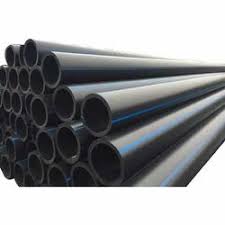Nov . 08, 2024 02:30 Back to list
Affordable 32mm PPR Pipe Price for Wholesale Purchase
Understanding the Pricing Dynamics of Wholesale 32mm PPR Pipes
In today's construction and plumbing industry, the demand for reliable, durable, and cost-effective piping solutions is of paramount importance. One such product that has garnered attention is the 32mm PPR (Polypropylene Random Copolymer) pipe. Commonly used for water supply systems, heating installations, and more, the pricing of these pipes can significantly impact project budgets and overall operational costs. This article aims to delve into the factors influencing the wholesale pricing of 32mm PPR pipes, trends impacting the market, and practical tips for procurement.
What is PPR Pipe?
Before discussing pricing, it’s essential to understand what PPR pipes are. PPR pipes are made from a type of plastic that offers excellent chemical resistance, durability, and a high level of hygiene, making them ideal for potable water systems. They are lightweight, easy to install, and require minimal maintenance over their lifespan. The 32mm diameter is particularly popular for various applications, including residential plumbing and industrial use.
Factors Influencing Wholesale Prices
1. Raw Material Costs The primary factor affecting the price of PPR pipes is the cost of raw materials. Polymer prices can fluctuate due to market demand, crude oil prices, and other economic factors. When the cost of polypropylene increases, manufacturers may raise wholesale prices to maintain profitability.
2. Manufacturing Processes The complexity of the manufacturing process can also affect pricing. High-quality PPR pipes require advanced technology and machinery. Manufacturers that invest in better technology may offer superior products at a higher price point.
3. Quality Standards Compliance with international and local standards can impact prices. Pipes that meet strict quality control measures, including durability and safety certifications such as ISO, may be priced higher due to the assurance of quality.
4. Market Demand Wholesale prices are also affected by market demand for construction and plumbing materials. During peak construction seasons or economic booms, demand for PPR pipes typically rises, leading to potential price increases.
5. Supply Chain Factors Supply chain challenges, such as transportation costs and import tariffs, can further influence the final cost of PPR pipes. Disruptions in the supply chain can lead to increased prices owing to limited availability.
Current Trends Affecting Pricing
wholesale 32mm ppr pipe price

The market for PPR pipes has seen various trends that affect pricing structures. The growing emphasis on sustainable building practices and eco-friendly materials is one such trend. As consumers and businesses become more environmentally conscious, the demand for sustainable piping solutions might influence pricing as manufacturers seek to meet this need.
Additionally, the rise of e-commerce has made it easier for buyers to compare prices from different wholesalers, leading to increased competition. This can sometimes drive prices down, but it can also encourage manufacturers to enhance quality and service, which could lead to a price increase for higher-end products.
Tips for Procuring Wholesale PPR Pipes
1. Compare Suppliers It’s crucial to compare pricing from multiple wholesale suppliers. Look for additional factors such as quality assurance, return policies, and customer service, which can add value beyond just the price.
2. Consider Bulk Purchasing Many suppliers offer discounts for bulk purchases. If you’re working on a large project, negotiating a bulk deal can lead to significant cost savings.
3. Stay Informed on Market Trends Understanding the market dynamics can help you anticipate price changes. Keep an eye on global economic trends, raw material costs, and changes in demand to make informed purchasing decisions.
4. Assess Total Cost of Ownership While upfront costs are essential, consider the total cost of ownership, including installation and maintenance. The most expensive option may not always be the most cost-effective in the long run.
5. Check for Reviews and Ratings Research suppliers for customer feedback on their products and services. A reputable supplier may charge a bit more but can provide greater reliability and support when needed.
Conclusion
The wholesale pricing of 32mm PPR pipes is influenced by a myriad of factors, including material costs, manufacturing processes, and market demand. As construction projects continue to evolve, staying informed and proactive in your procurement strategy can lead to substantial savings and ensure the successful completion of projects. Whether you’re a contractor or a DIY enthusiast, understanding these dynamics will empower you to make better purchasing decisions in the ever-changing market.
-
High-Quality PVC Borehole Pipes Durable & Versatile Pipe Solutions
NewsJul.08,2025
-
High-Quality PVC Perforated Pipes for Efficient Drainage Leading Manufacturers & Factories
NewsJul.08,2025
-
High-Quality PVC Borehole Pipes Durable Pipe Solutions by Leading Manufacturer
NewsJul.08,2025
-
High-Quality PVC Borehole Pipes Reliable PVC Pipe Manufacturer Solutions
NewsJul.07,2025
-
High-Quality UPVC Drain Pipes Durable HDPE & Drain Pipe Solutions
NewsJul.07,2025
-
High-Quality Conduit Pipes & HDPE Conduit Fittings Manufacturer Reliable Factory Supply
NewsJul.06,2025

